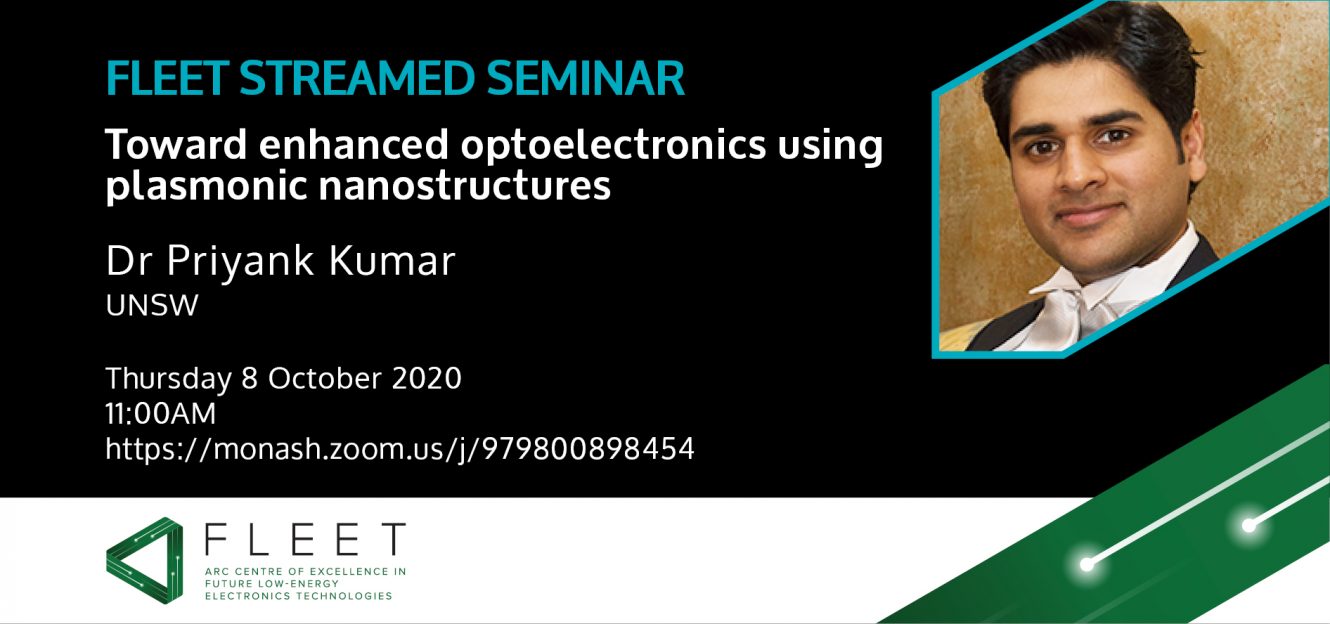-
8 Oct 2020
11:00 am - 12:00 pm
Download flyer here.
Toward enhanced optoelectronics using plasmonic nanostructures
Dr Priyank Kumar, UNSW
Abstract: Plasmonic-metal/semiconductor assemblies could open up a new chapter in optoelectronics by enabling bandgap-free photodetection and sunlight-driven photocatalysis. These unique features arise because plasmonic metals can better concentrate light than other materials and because they rely on fundamentally different physical mechanisms as compared to existing technologies. While prototype devices that utilize this concept already exist, they continue to suffer from poor efficiencies (external quantum efficiency < 1%), and fall short in other figures-of-merit. These shortcomings can be attributed to the limited understanding of the plasmon-induced hot-carrier transfer processes at the metal/semiconductor interface and as a result, to the lack of performance optimization. In this talk, Priyank will review these concepts and highlight key issues. He will also discuss how recently developed ab initio methods based on density functional theory (DFT) and time-dependent DFT (TDDFT) can be utilized to address them – a daunting task to achieve in experiments. He will then talk about suitable ways to overcome such bottlenecks, which could lead to more efficient plasmonic hot-carrier devices.
About the speaker: Dr Priyank Vijaya Kumar is a Scientia fellow (level B) in the school of chemical engineering at UNSW, Sydney. His research focuses on designing atomically-thin materials and plasmonic nanostructures for applications in electronics, optoelectronics, photo(electro) catalysis and desalination/filtration using ab initio computational methods such as density functional theory (DFT) and time-dependent DFT (TDDFT).

